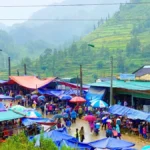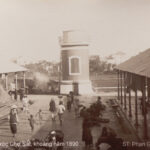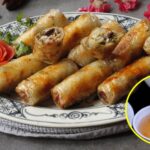The market’s architecture, deeply rooted in East Asian influences, stands as a recognized art relic in the heart of Saigon.
Cho Binh Tay, or Binh Tay Market, has a long history intertwined with the many ups and downs of old Saigon. In 1776, Saigon, known today as District Cho Lon (with Saigon being previously called Ben Nghe), became a settlement for Chinese people from Cu Lao Pho (present-day Bien Hoa) as they fled from the historical events between Nguyen Anh and the Tay Son army. Compared to Cu Lao Pho, Saigon offered significant advantages due to its favorable water and road transportation.

A bird’s-eye view of the vast Binh Tay Market, resembling an ancient citadel.
Following their customs and traditions, the Chinese community established a marketplace upon settling in a new area to facilitate trade and exchange. And thus, Cho Lon, or the Big Market, came into being, becoming the most thriving commercial hub in Saigon at the time. It attracted traders and buyers from various localities, eventually outgrowing its capacity to accommodate the influx of merchants and customers. The authorities planned to rebuild the market but struggled to find a suitable location.
Hearing this, Quach Dam, a Chinese merchant from Chaozhou, China, who was doing business in Vietnam, purchased a marshy plot in Binh Tan village. He reclaimed and filled the land before constructing a new market, which he gifted to the state with the initial purpose of serving the Chinese community in Saigon.
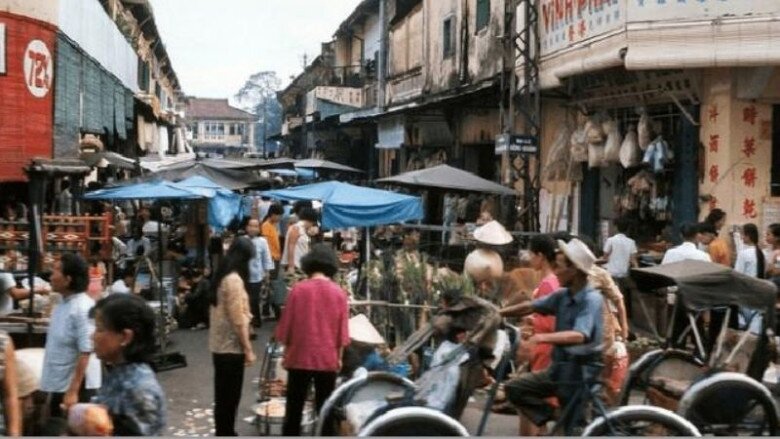
Bustling with people since its inception, Binh Tay Market has never had a quiet day.
Construction of the market began in 1928, and it was inaugurated two years later. The architecture drew inspiration from Chinese styles while incorporating modern French building techniques of that era. In 1992, the People’s Committee of District 6 renovated and upgraded the market’s canopy by adding an additional floor. In 2006, the Tran Binh and Le Tan Ke areas underwent further investments for refurbishment. Then, in 2015, the Center for Preservation of Relics under the Ho Chi Minh City Department of Culture and Sports, along with the Relic Appraisal Council of Ho Chi Minh City, recognized Binh Tay Market as an architectural art relic in the city.
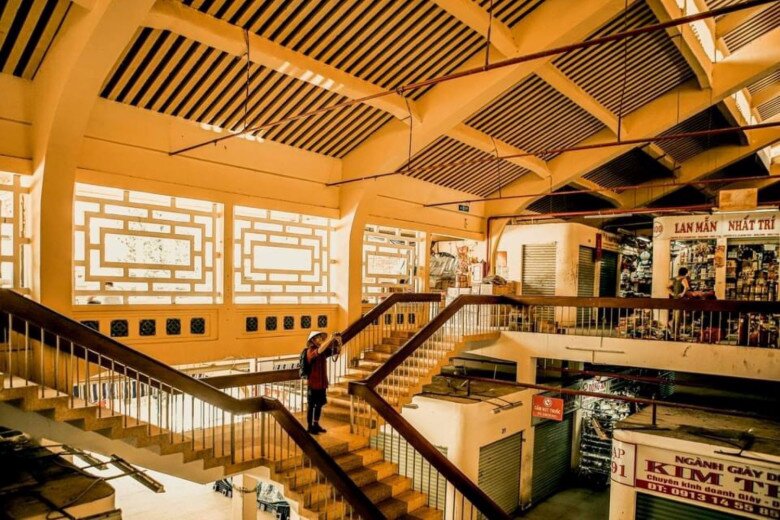
The serene courtyard within the Binh Tay Market complex.
Upon entering Binh Tay Market, visitors are immediately struck by the towering central tower, adorned with intricately carved sành (a type of ceramic) depicting “lưỡng long chầu châu” (two dragons guarding a pearl). Surrounding it are four synchronized clocks, creating a unique architectural focal point. At the heart of the market lies a spacious courtyard, where a statue of Quach Dam stands, honoring his wishes. The original statue has been relocated to the Ho Chi Minh City Fine Arts Museum, replaced by a bust funded by donations from the market traders. The courtyard also features a lotus pond with fish and stone benches for visitors to rest and capture memorable moments. Adjacent to the market is China Town, a vibrant neighborhood worth exploring when visiting Binh Tay Market.
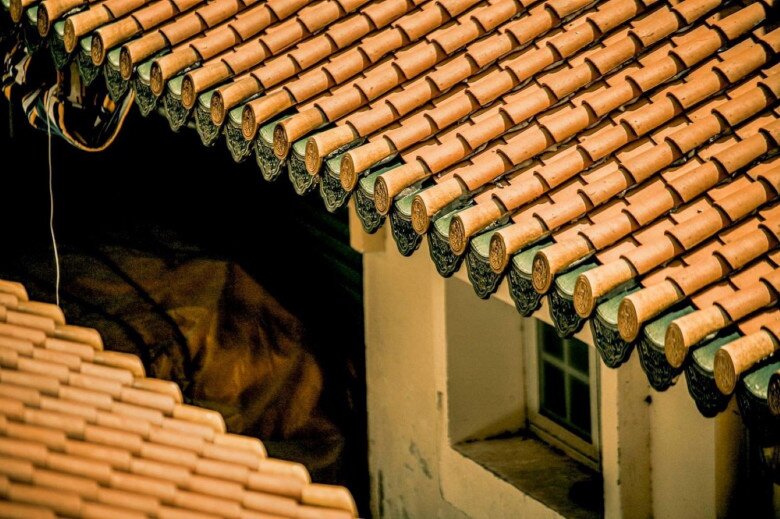
The market’s roof is adorned with yin and yang tiles, a unique feature.
Binh Tay Market is divided into five distinct areas, housing a total of 2,300 stalls offering over 30 different types of goods. The ground floor area, including the front section facing Duong Tap Muoi Street, specializes in ceramics, porcelain, incense, zinc nails, conical hats, dried spices, and paintings. Additionally, visitors can find an array of eye-catching accessories, footwear, and jewelry here. The upper floor features a diverse range of products, from groceries and confectionery to ready-made garments. The Tran Binh section caters to those seeking a wide variety of spices, tea, coffee, fresh seafood, and fruits. The Le Tan Ke area focuses on dried goods, oils, dried seafood, betel leaves, vegetables, and spices. Lastly, the Phan Van Khoe zone offers an extensive selection of fresh produce, including beef, seafood, frogs, tofu, and eggs.
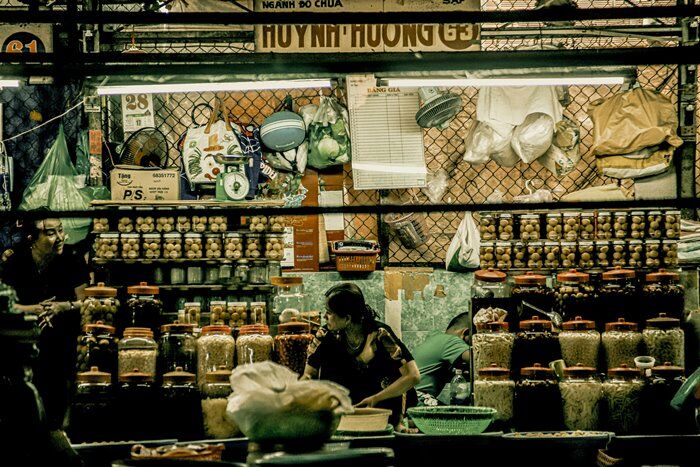
A creatively presented stall selling pickled vegetables, showcasing the artistic side of the market.
As Saigon’s largest wholesale market, Binh Tay buzzes with activity from 2 am to 10 pm, with a vibrant night scene. The surrounding area boasts a plethora of delicious eateries, serving up authentic Saigonese flavors around the clock. Dishes like “phá lấu” (a traditional Chinese-influenced Vietnamese stew), “bánh ướt” (steamed rice rolls), and “vịt tiềm” (herbal duck soup) are among the specialties that attract foodies to this market. The culinary delights at Binh Tay Market blend traditional Chinese flavors with a Vietnamese twist, offering affordable and delectable options that draw a steady stream of diners daily.
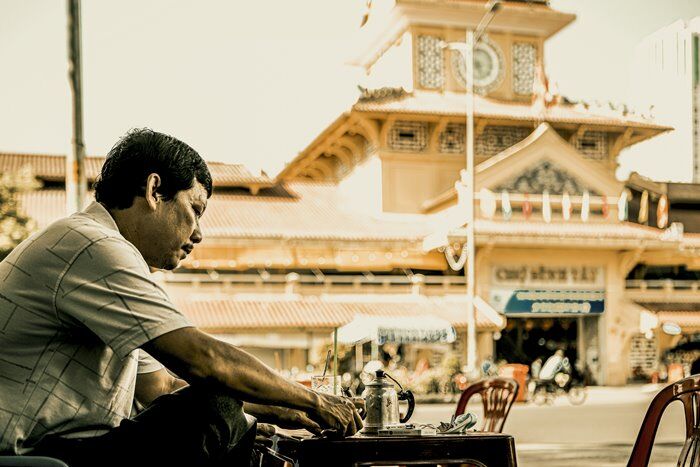
Despite multiple renovations and new constructions, Binh Tay Market retains its unique architecture, earning its reputation as Saigon’s most beautiful market.
Through well-planned renovations and adaptations, the market has maintained its distinctive architectural character while offering a diverse range of goods at affordable prices. Binh Tay Market stands as a century-old cultural symbol in the vibrant city of Saigon, cherished for its historical and aesthetic value.
The Ultimate Guide to Mastering the Art of Delicious Saigon-Style “Com Tam”
“Broken Rice”, or “Com Tam” as it is locally known, has become a renowned dish both domestically and internationally. Originating from the South, it has now become a signature delicacy of Saigon. Despite its simple ingredients, this dish boasts a unique flavor profile that sets it apart from any other rice dish out there.

























